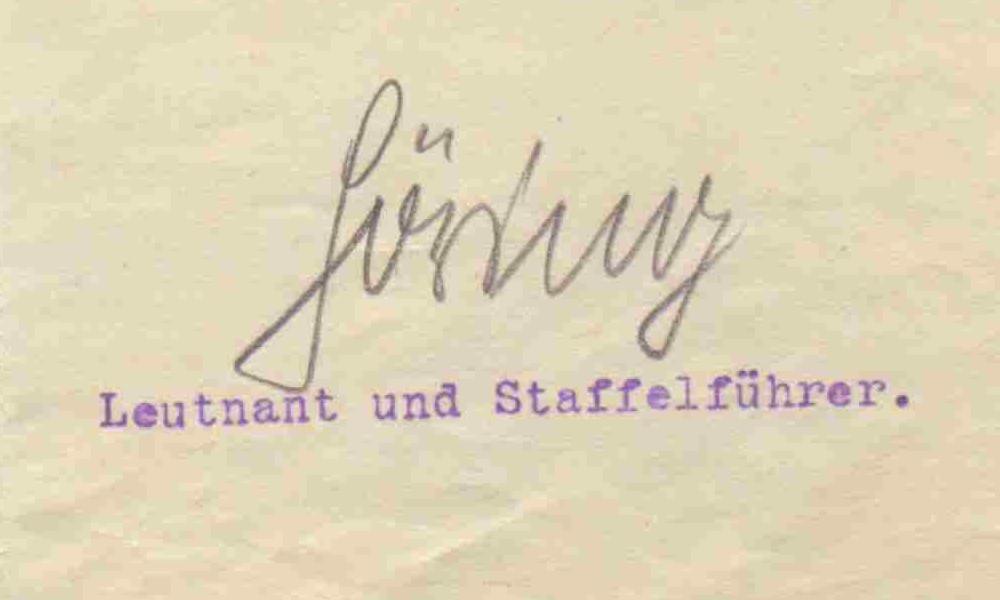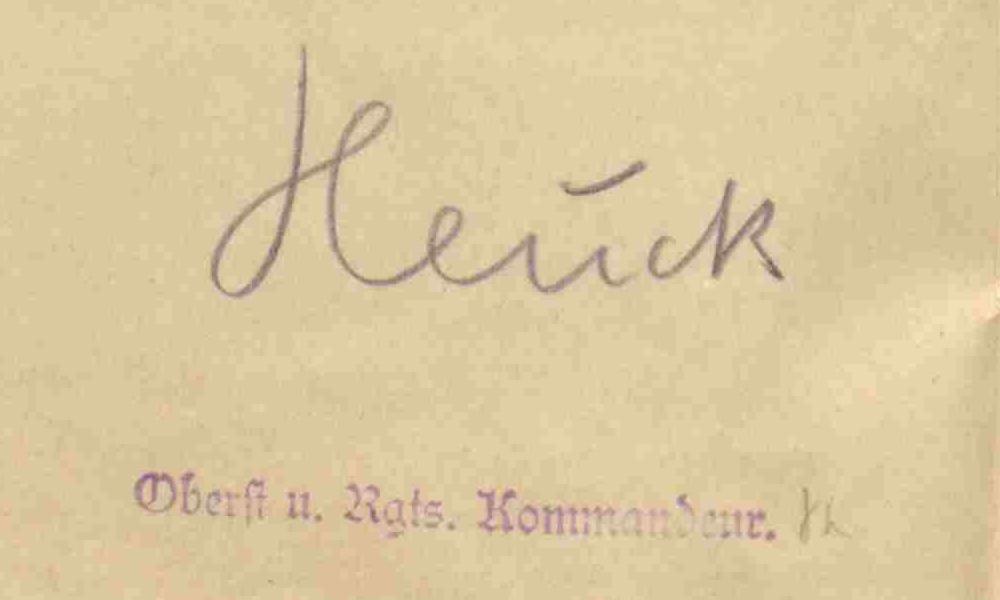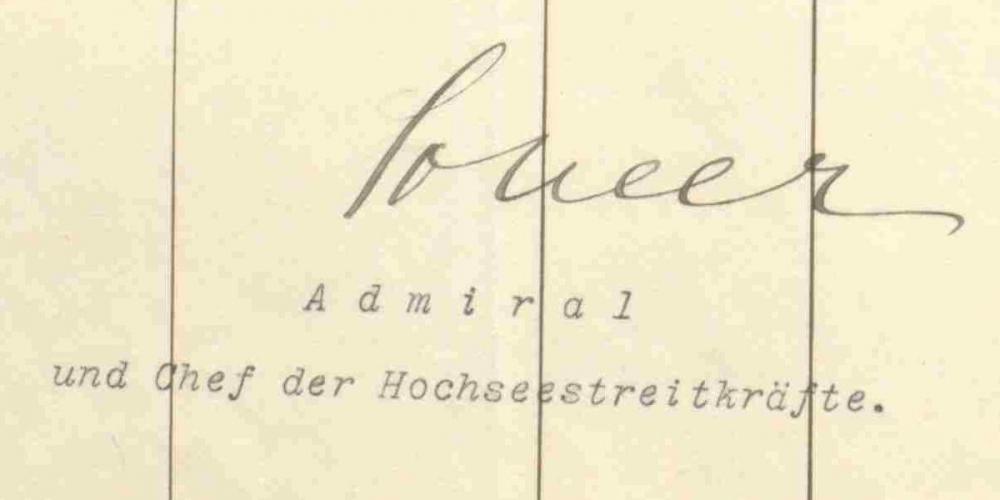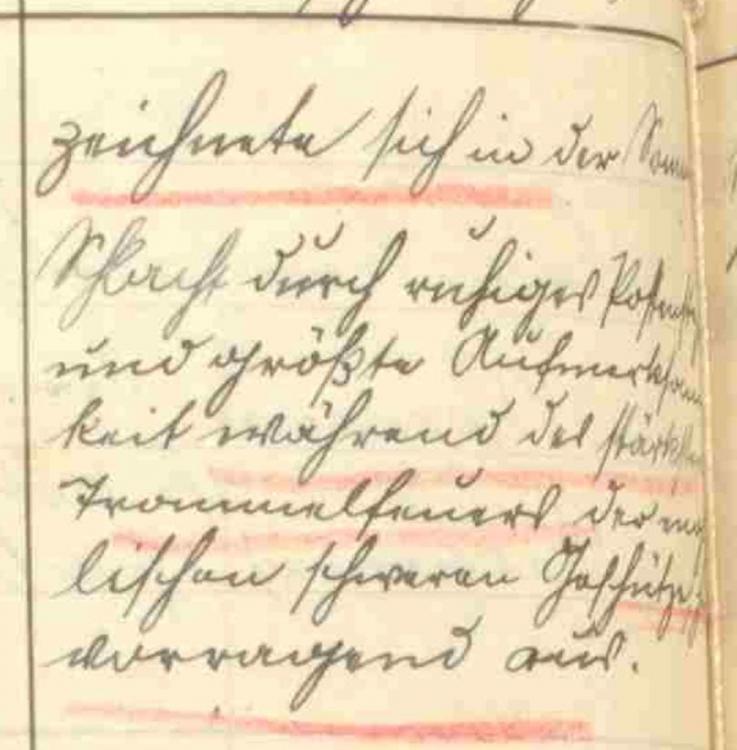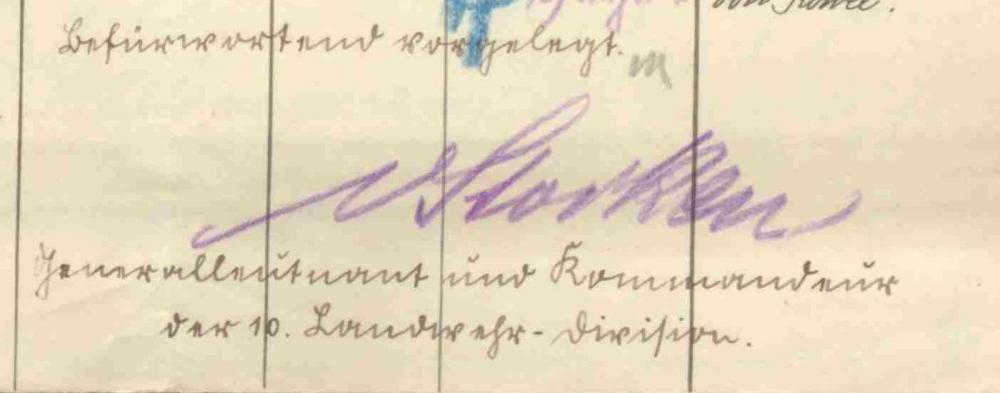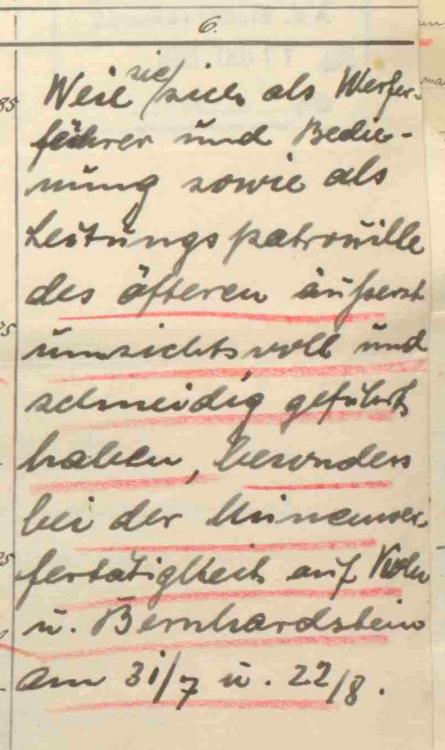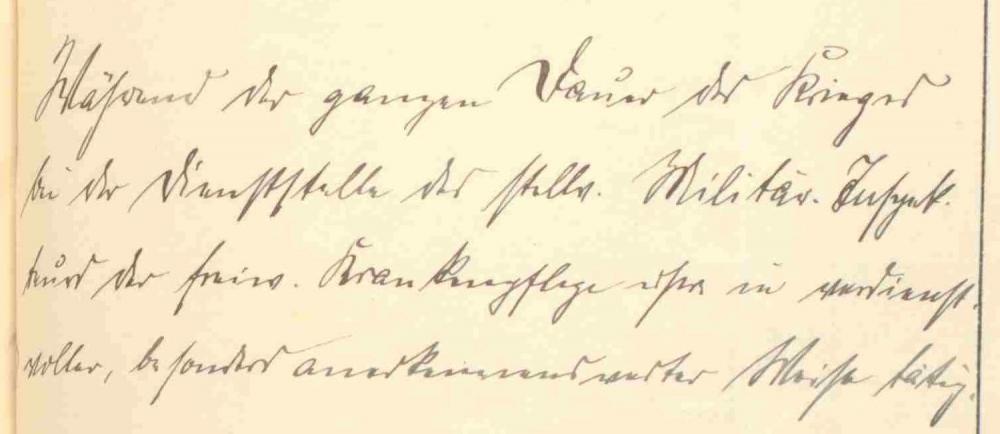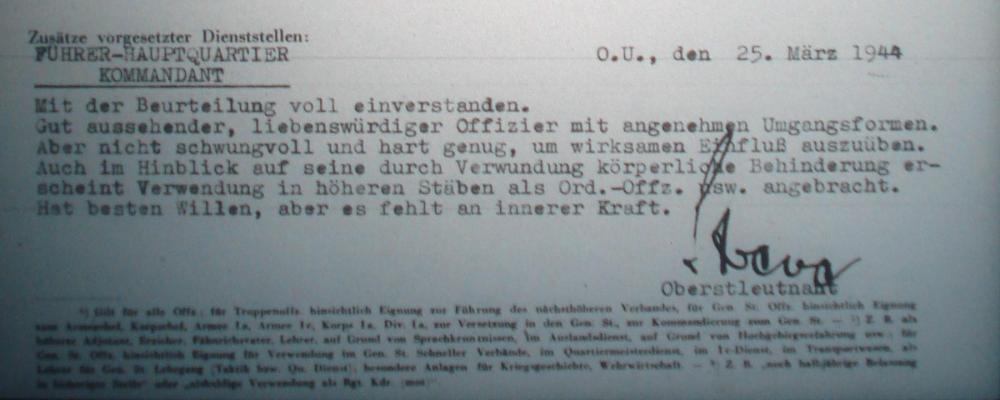-
Posts
4,908 -
Joined
-
Last visited
-
Days Won
97
Content Type
Profiles
Forums
Blogs
Gallery
Events
Store
Everything posted by Dave Danner
-
It is not accurate to say that it was an intermediate award, at least in the sense that you appear to mean. Most Pour le Merite recipients had the House Order of Hohenzollern, but there was no formal requirement that one have it before one could receive the plM. Also, the HOH3X was typically awarded only to colonels and below. Generals, and some colonels (usually brigade commanders), usually received the Crown Order with Swords and/or the Red Eagle Order with Swords before being considered for the Pour le Merite. A few of these received a higher grade of the HOH with swords, but not many. The Red Eagle and Crown Orders were the preferred awards for senior commanders. By contrast, the lower grades of the Red Eagle and Crown Orders with Swords were not commonly awarded in World War I.
-

Luftwaffe Goering, Hermann
Dave Danner replied to hucks216's topic in Germany: All Eras: Signature Database
I didn't even recognize this one at first. I went looking for someone who was in Jasta 27 and whose name began "Gö", and had a "duh" moment when I found him. From a 1917 award recommendation for a Vizewachtmeister in Jasta 27: -

Transcription confirmation
Dave Danner replied to Dave Danner's topic in Deutsche Kaiserreich: Man spricht Denglish
Thanks! That makes sense. And thanks for the link! -

Luftwaffe Kesselring, Albert
Dave Danner replied to hucks216's topic in Germany: All Eras: Signature Database
-
Grimmeiß, Maximilian * 27.02.1893 in Erlangen † 31.03.1972 in Erlangen 10.11.1938-26.08.1939 Kommandeur, Artillerie-Regiment 78 26.08.1939-10.09.1939 Chef des Generalstabes, XII. Armeekorps 01.10.1939-01.01.1941 Chef des Generalstabes, IX. Armeekorps 15.01.1941-21.11.1941 Chef des Generalstabes, 15. Armee 01.12.1941-10.07.1944 General des Heeres zum Reichsmarschall und Oberbefehlshaber der Luftwaffe 24.01.1945-01.04.1945 m.d.F.b., LXIV. Armeekorps 01.04.1945-15.04.1945 Kommandierender General, LXIV. Armeekorps 01.03.1939 Oberst 01.02.1942 Generalmajor 01.04.1943 Generalleutnant 01.04.1945 General der Artillerie http://www.lexikon-der-wehrmacht.de/Personenregister/G/GrimmeissMaximilian.htm
-

Luftwaffe Goering, Hermann
Dave Danner replied to hucks216's topic in Germany: All Eras: Signature Database
-

Heer Fritsch, Werner Freiherr von
Dave Danner replied to hucks216's topic in Germany: All Eras: Signature Database
-

imperial 1914-1918 Heuck, Albert
Dave Danner posted a topic in Germany: All Eras: Signature Database
Heuck, Albert Karl Friedrich Max *26.04.1863 in Roga, Mecklenburg-Strelitz †01.07.1942 in Kiel Ritter des Ordens "Pour le Mérite" (28.10.18) At the outbreak of World War I, Heuck was an Oberstleutnant z.D. with the German Military Mission in the Ottoman Empire, serving in the 13. Division in Ankara. xx.12.1915 Führer, 24. türk. Division xx.06.1916 in preuß. Dienst wieder eingetreten xx.07.1916 Kommandeur, Reserve-Infanterie-Regiment Nr. 227 xx.04.1917 Kommandeur, 237. Infanterie-Brigade xx.12.1918 Führer, Freikorps Heuck xx.03.1919 Kommandeur, 22. Infanterie-Brigade xx.07.1919 Infanterieführer 32 xx.02.1920 Kommandeur, Reichswehr-Infanterie-Regiment 16, zeitweise stellv. Infanterieführer 8 18.05.1920 Befehlshaber der Infanterie, Reichswehr-Brigade 20 31.12.1920 verabschiedet 18.05.1916 Oberst 18.05.1920 Generalmajor 27.08.1939 Charakter als Generalleutnant a.D. Dates are based on Möller-Witten, Geschichte der Ritter des Ordens "pour le Mérite" im Weltkrieg. -

imperial 1914-1918 Scheer, Reinhard
Dave Danner posted a topic in Germany: All Eras: Signature Database
Scheer, Carl Friedrich Heinrich Reinhard *30.09.1863 in Obernkirchen †26.11.1928 in Marktredwitz 01.02.1913 Chef des II. Geschwader 28.12.1914 Chef des III. Geschwader 24.01.1916 Chef der Hochseestreitkräfte 11.08.1918 Chef des Admiralstabes der Marine (Seekriegsleitung) 09.12.1913 Vizeadmiral 05.06.1916 Admiral Ritter des Ordens "Pour le Mérite" mit Eichenlaube Großkreuz des Militär-Max-Joseph-Ordens Ritter des Militär-St. Heinrichs-Ordens u.a. -

Transcription confirmation
Dave Danner replied to Dave Danner's topic in Deutsche Kaiserreich: Man spricht Denglish
Bumped because I'm still hoping for help with these last three transcriptions. Thanks -
Schimmelmann, Karl August Gustav Malte Freiherr v. *30.03.1856 in Petersdorf †24.09.1926 in Stettin He entered service on 19.04.1876 and left active duty on 22.03.1910. During World War I, he was recalled as an Oberstleutnant z.D., serving as a battalion commander in Reserve-Infanterie-Regiment Nr. 82 and as a Bahnhofs-Kommandant in occupied Romania. His battalion command in RIR 82 may have been the Ersatz-Bataillon, since he does not show up in the award rolls for war decorations from the states most closely connected to RIR 82, Schwarzburg-Sondershausen and Sachsen-Coburg und Gotha. Known decorations are: • Roter-Adlerorden 4. Klasse mit der Krone • Kronenorden 3. Klasse • Dienstauszeichnungskreuz • Kaiser-Wilhelm-Gedächtnismedaille
-

Transcription confirmation
Dave Danner replied to Dave Danner's topic in Deutsche Kaiserreich: Man spricht Denglish
There's no umlaut, so it would be Koln or something similar, but neither that nor Bernhardsbein make much sense, unless they were names of particular trenchlines or fighting positions. Besides these two above, I have yet another transcription to check. I have "Zeichnete sich in der Somme-Schlacht durch ruhiges _____ und großte Aufmerksamkeit während des stärksten Trommelfeuers der englischen schweren Geschütze hervorragend aus." Thanks, Dave -
Wilhelm Pickel from the 2. bayer. Fußartillerie-Regiment, born 17 April 1881 in Nürnberg, received the Charakter of Major a.D. on 29 Mai 1920. The World War I awards, both German and Ottoman, match those in the Bavarian Kriegsranglisten on Ancestry.com. The 1870 EK chain and minis match a Prussian railway Beamter, not a Bavarian, so perhaps not a close relative of Pickel (Pickel's father was a Bavarian Gymnasial-Professor in Fürth).
-
Closest match I have is Oberst Johann Jahns, Gruppenleiter I, Wehrersatz-Inspektion Dortmund. He was an Oberleutnant in IR 165 in 1914 and spent most of World War I with RIR 27. He also received the KVK2X (20.11.1940) and KVK1X ( 30.1.1943), but may not have updated the medal bar during World War II. There may be other matches out there. The combination may not be common, but it is not unique.
-

imperial 1914-1918 Stocken, Leo von
Dave Danner posted a topic in Germany: All Eras: Signature Database
Stocken, Leo August Eduard v. *7.5.1862 in Berlin, †22.12.1926 22.03.1907 Chef des Generalstabes, III. Armeekorps 21.04.1911 Kommandeur, Infanterie-Regiment Nr. 94 19.11.1912 Kommandeur, 49. Infanterie-Brigade 05.07.1913 Chef des Generalstabes, IV. Armeekorps 24.12.1914 Kommandeur, 81. Reserve-Division 03.03.1916 Kommandeur, 10. Landwehr-Division 23.11.1917 Kommandeur, 4. Ersatz-Division xx.xx.1918 zu den Offizieren von der Armee versetzt 20.05.1918 zur Disposition gestellt 19.06.1909 Oberst 27.01.1913 Generalmajor 05.10.1916 Generalleutnant -
Mühry, Georg *5.9.1859 in Hannover, †23.1.1946 in Kloster Wienhausen Ritter des Ordens "Pour le Mérite" (25.10.18) Before the war, he was commander of the Infanterie-Schießschule and had previously commanded Jäger-Bataillon Nr. 10. 02.08.1914 Kdr. Reserve-Infanterie-Regiment Nr. 35 30.09.1914 Kdr. 25. Reserve-Infanterie-Brigade 26.10.1914 Kdr. 108. Reserve-Infanterie-Brigade 19.04.1915 Kdr. 67. Infanterie-Brigade 01.10.1916 Kdr. 223. Infanterie-Division 02.01.1917 Kdr. 236. Infanterie-Division 06.02.1919 Kdr. 1. Garde-Infanterie-Division 01.05.1919 Kdr. Reichswehr-Brigade 4 23.08.1919 mit Charakter als Generalleutnant zur Disposition gestellt 01.10.1912 Oberst 22.03.1915 Generalmajor 23.08.1919 char. Generalleutnant
-

Transcription confirmation
Dave Danner replied to Dave Danner's topic in Deutsche Kaiserreich: Man spricht Denglish
Next: I have "Weil sie sich als Werferführer und Bedienung sowie als Leitungspatrouille des öfteren äußerst umsichtsvoll und schneidig geführt [?] haben, besonders bei der Minenwerfertätigkeit auf [Vesle? Koln?] und [Bernhardsbein?] am 31/7 u. 22/8." The unit was Minenwerfer-Kompanie Nr. 313, with an endorsement from the 61. Landwehr-Infanterie-Brigade. -

Transcription confirmation
Dave Danner replied to Dave Danner's topic in Deutsche Kaiserreich: Man spricht Denglish
And here we go again! I have "Während der ganzen Dauer des Krieges bei der Dienststelle des stellv. Militär-Inspekteurs der freiw. Krankenpflege _____ in verdienstvoller, besonders anerkennenswerter Weise tätig." The citation is for seven civilians. -
It would appear that it is neither of the two Blombergs identified above. Moritz Frhr.v. Blomberg, *19.12.1870 in Detmold, †1.4.1940 auf Iggenhausen, received the Lippe Kriegsverdienstkreuz on 4.2.1915 and acknowledged receipt of the cross by an Empfang dated 22.2.1915. He wasn't in a Lippe-connected formation, as Rick had noted above, but he was born in Lippe's capital and his father had been a Fürstlich lippischer Kammerdirektor and Kammerherr. Dr. Karl Frhr.v. Blomberg was born on 24.6.1860 in Berlin and died on 21.6.1930 in Weimar. He was a Sanitätsrat and Direktor of the Provinzial Irren- und Idiotenanstalt in Kosten. He was a Rechtsritter of the Johanniterorden. Since he died in 1930, he would not have had the Ehrenkreuz für Frontkämpfer unless the family mounted it posthumously.
-
I assume you meant 1.55m, since 1.55cm would be a bit small for any Army, unless you are talking about an AA MG. According to a Daily Mail article, the average height of an Englishman went up about four inches between 1900 and 2000, from around 5'6" to 5'10". I have seen similar data for Americans, but I've also seen data that Americans are getting shorter in recent decades. Various reasons are given, but I think the main reason is the "average" American today includes more immigrants from ethnicities who are shorter on average - East Asians and Central Americans of heavily American Indian ancestry. Assuming Germans were similar to Englishman, I think that would mean 155cm, which is 5'1", was about 5 inches or 2cm below average back then, so similar to being 5'5" or 165cm today. Shorter than the average infantryman, but probably perfect for being a T-72 crewman.
-
Because IR 47's Chef was König Ludwig III., the regiment was the most likely Prussian one to receive Bavarian decorations. Some 60 officers of the regiment are known to have the Military Merit Order with Swords. Hartmann's award was among the following made on 7 December 1914 to officers and men of IR 47: • BMV4XKr to 3 Majors • BMV4X to 3 Hauptleute, 1 Rittmeister d.L., 4 Oberleutnants (2 d.R., 1 d.L.), and 14 Leutnants (5 d.R.) • BMV5aX to 2 Feldwebelleutnants • BMV5bXKr to 3 Offizier-Stellvertreter • BMV5bX to 3 Feldwebels and 4 Vizefeldwebels • BMV5cXKr to 5 Sergeants and 12 Unteroffiziere (8 d.R.) • BMV5cX to 8 Gefreiters (4 d.R.), 10 Musketiers and 5 Reservists • BMV5bKV to 1 Waffenmeister These initial awards account for just under 1/3 of the regiment's officers and under 2% of the NCOs and enlisted men at that point (assuming 80 or so officers, medical officers and Beamten and 3300 NCOs and men on mobilization, minus casualties, plus replacements). For an NCO, you're right that being on a staff, rather than some random grunt, cetrainly helped. Reminds me of some Legionnaire I know who missed out on an award by not being in the "right" place.
-

Heer Streve, Gustav
Dave Danner replied to hucks216's topic in Germany: All Eras: Signature Database


